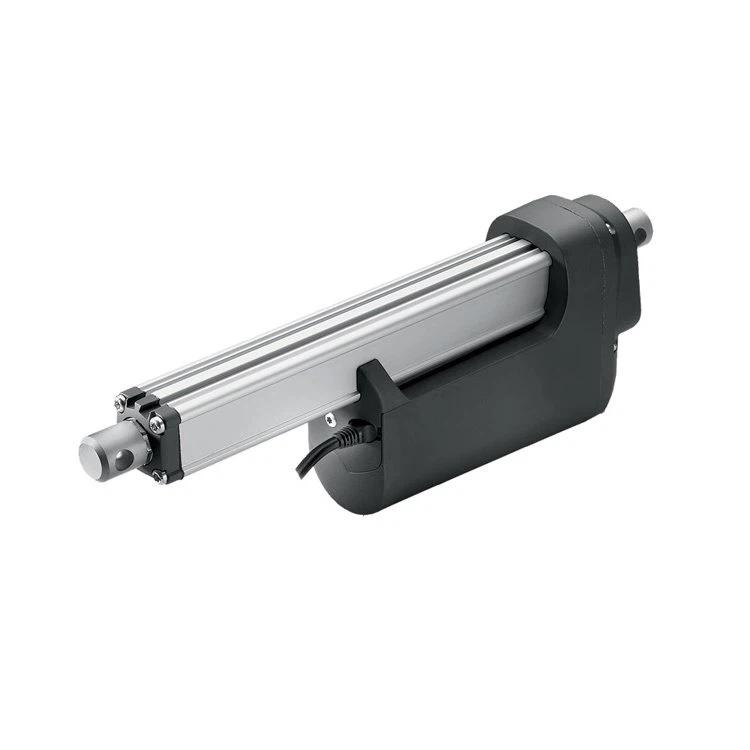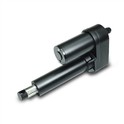As a supplier of 24V linear actuators, I've seen firsthand how over - current can mess up these nifty devices. A 24V linear actuator is a workhorse in many applications, from small - scale projects with Mini Linear Actuator to heavy - duty industrial tasks with Heavy Duty Linear Actuator and even in door - opening systems with Linear Actuator for Door Opener. But when too much current flows through them, it can lead to all sorts of problems like overheating, reduced lifespan, and even complete failure. So, let's dive into how you can protect your 24V linear actuator from over - current.
Understanding Over - Current in 24V Linear Actuators
First off, we need to know what causes over - current. There are a few common reasons. One is mechanical blockage. If the actuator's rod gets stuck or there's something preventing it from moving freely, the motor has to work harder. And when the motor works harder, it draws more current. Think of it like trying to push a car that's got its brakes on. You've got to put in a whole lot more effort, right?


Another reason could be incorrect power supply. Using a power source with a higher voltage or current rating than what the actuator is designed for can also lead to over - current. It's like trying to pour a gallon of water through a small - diameter pipe. The system just can't handle it.
Fuses and Circuit Breakers
One of the simplest and most effective ways to protect your 24V linear actuator is by using fuses or circuit breakers. A fuse is a small device that has a thin wire inside. When the current flowing through it exceeds a certain limit, the wire melts, breaking the circuit. It's like a self - sacrificing hero that saves the rest of the system.
Circuit breakers, on the other hand, are reusable. They work by tripping a switch when the current goes above a set value. Once the problem is fixed, you can just reset the breaker and get the actuator running again.
When choosing a fuse or circuit breaker, you need to pick one with the right current rating. It should be slightly higher than the normal operating current of the actuator but low enough to trip before the over - current causes damage. You can usually find the normal operating current in the actuator's datasheet.
Current Limiting Resistors
Current limiting resistors are another option. These resistors are placed in series with the actuator. They work by reducing the amount of current flowing through the circuit. The value of the resistor you need depends on the actuator's resistance and the desired current limit.
However, there's a downside to using current limiting resistors. They dissipate power in the form of heat. So, you need to make sure they can handle the heat without getting damaged. Also, using a resistor can reduce the efficiency of the system because some of the power is wasted as heat.
Smart Motor Controllers
Smart motor controllers are becoming more and more popular for protecting linear actuators from over - current. These controllers can monitor the current flowing through the actuator in real - time. If the current exceeds a preset limit, the controller can take action, like reducing the power to the motor or shutting it off completely.
Some smart motor controllers also have advanced features like soft - start and soft - stop. This means the actuator doesn't start or stop abruptly, which can also help prevent over - current situations. For example, when an actuator starts suddenly, there's a high inrush current. A soft - start feature gradually ramps up the power, reducing this inrush current.
Thermal Protection
Over - current often leads to overheating, and overheating can damage the actuator's components. That's why thermal protection is so important. Many actuators come with built - in thermal sensors. These sensors can detect when the temperature of the actuator is getting too high.
When the temperature reaches a certain threshold, the thermal sensor can trigger a shutdown. This gives the actuator time to cool down before it gets damaged. Some systems also have fans or heat sinks to help dissipate heat more effectively.
Regular Maintenance and Inspection
Last but not least, regular maintenance and inspection can go a long way in preventing over - current problems. Check the actuator for any signs of mechanical wear or damage. Make sure the rod moves smoothly and there are no obstructions.
Inspect the power supply and wiring for any loose connections or signs of damage. A loose connection can cause a voltage drop, which in turn can lead to over - current as the motor tries to compensate.
If you notice any issues during the inspection, fix them right away. It's always better to catch a problem early than to wait for it to turn into a major disaster.
Conclusion
Protecting your 24V linear actuator from over - current is crucial for its long - term performance and reliability. Whether you're using fuses, circuit breakers, current limiting resistors, smart motor controllers, or thermal protection, each method has its own advantages. And don't forget about regular maintenance and inspection.
If you're in the market for a 24V linear actuator or need more advice on protecting your existing ones, I'm here to help. Just reach out, and we can have a chat about your specific needs. Whether it's a Mini Linear Actuator for a small project or a Heavy Duty Linear Actuator for an industrial application, I've got the expertise to guide you.
References
- "Linear Actuator Handbook" - A comprehensive guide on linear actuators and their operation.
- Manufacturer's datasheets for 24V linear actuators, which provide detailed information on current ratings and operating conditions.






